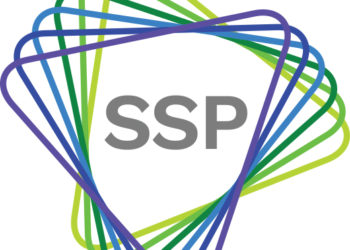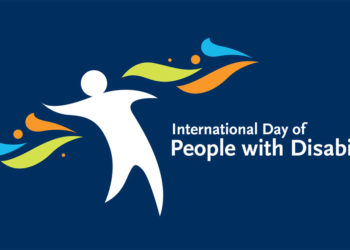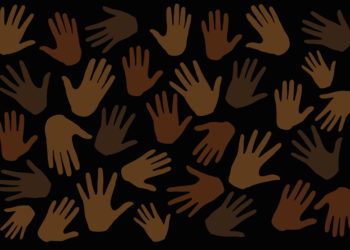Many readers of The Scholarly Kitchen will already be at least somewhat familiar with the Workplace Equity Survey*, which was carried out during 2018. Susan Spilka, Simone Taylor, and Jeri Wachter, founders of the Workplace Equity Project (WEP), moderated a panel on the survey’s key findings at the SSP’s annual conference in 2018: “Workplace Equity in the Scholarly Publishing Industry—Survey Report and Panel Discussion“.
Learned Publishing, the ALPSP journal, has now published these findings in a peer-reviewed article — “Evaluating Equity in Scholarly Publishing” — available open access thanks to ALPSP and the publisher, Wiley. Having been peripherally involved with WEP and the survey myself, and having read the resulting article, I’m delighted to share this interview with Susan, Simone, and Jeri about their work. They (and I) also want to give a big shout-out to Kristen Monahan and Isabel Mulhern, two self-described data nerds working at PLOS in business analytics and operations, respectively, who contributed their time and expertise to analyze the survey responses and draw out key findings, as well as preparing the data representation for publication. They see this work as “a step forward in highlighting failings in representation and inclusiveness within the industry” — I wholeheartedly agree!

Let’s start with some introductions! Please can you each tell us a bit about yourselves and your involvement with the Workplace Equity Project (WEP) and the survey?
Jeri: I cofounded William Andrew Publishing in 1989, and ever since, I’ve been doing my best to dedicate my work to raising awareness about critical issues to help people make informed decisions to build a better world. The Workplace Equity Project was born out of an AAP/PSP-sponsored Women in PSP Publishing session that Susan (Spilka) and I co-moderated in October 2017 in response to decades of anecdotal, as well as reported diversity issues, not only in scholarly publishing, but across all publishing. It was a sold out session, with a rock star panel of women. WEP cofounder, Simone (Taylor), was among the panelists, alongside Susan King, Wendy Newsham, and Bamini Jayabalasingham. In parallel, Susan had begun to write the survey, collaborating with Alice Meadows, Sara Pinto, and myself. We were taking cues from multiple industries, which were reporting on the lack of diversity and opportunities for women to advance in the workplace. But, unlike most fields which suffer from a gender parity issue, publishing has been a majority female workforce dominated by male leadership for decades.
Together, Simone, Susan, and I recruited a review team to assist with the development of the survey questions. We built our advisory board and solicited support from organizations around the world to help promote the survey to reach the widest global audience possible. When the WE Survey closed, Simone, Susan and I began the arduous and careful task of evaluating the data, which we presented at a variety of events as well as collaborating with Emerald Publishing to publish our Executive Summary.
Susan: Throughout my 25+ years in publishing, at Wiley, CHORUS, Knowledge Unlatched, and most recently as a consultant with TBI Communications and on my own, I’ve been in a unique position to interact with a wide spectrum of people at all levels. I’ve witnessed inequities first hand. When Jeri Wachter proposed tackling the issue of gender bias, it seemed like a great opportunity to activate these insights. Simone joined along the way and we reached out to colleagues throughout the industry to build a global survey in 2018 that mapped bias from the perspective of employees.
Simone: As Jeri mentions, she and Susan invited my participation on the panel they were chairing for Women in PSP Publishing. Ahead of that meeting, Susan mentioned they were planning a gender equity survey too, and she was looking for some help. I had just left Wiley and was curious about doing something different, so I was only too happy to join. The theme evolved from gender equity to workplace equity, incorporating a stated mission and vision around embracing the perspectives of a wide range of voices without which we cannot perform at our best.
Why did you decide to carry out the Workplace Equity Survey? What did you hope to learn?
Simone: It was and still is important to understand why our industry remains stubbornly non-diverse, with a male-dominated leadership, in spite of its overwhelmingly female workforce. But to do this we first needed to learn more about how we as the workforce experienced the workplace. What is it like to work in publishing? What is it that drives us? Can we carve out careers? Can we make progress in those careers? What are the drivers for success? How do outcomes vary?
Susan: As Simone says, despite having a majority-female workforce, scholarly publishing is still male-dominated at the leadership level and there are very few people of color at any level. We knew this to be true from observation but we wanted to confirm it with data, as well as to document the everyday workplace experiences, practices, and realities of colleagues all over the world — giving voice to their relative perceptions of bias and privilege. Finally, we wanted to identify areas where changes could make a real difference, and bring these to the attention of the industry’s leaders.
Jeri: As a consultant, and woman business owner in STEM publishing for more than 20 years, I have personally experienced and witnessed gender bias in the workplace, and have managed issues arising in my own company from less than stellar behavior exhibited by male management and colleagues toward female staff. I also developed an acute sense of racial bias in publishing while working on a project for a Black studies course. I was conducting field work which included visiting public libraries and interviewing librarians in economically disadvantaged and predominantly African-American neighborhoods in NYC. Among them was the Langston Hughes Library in Corona, Queens. Not only was it the only library for miles, at that time, it was also the only library with more than a couple of titles by black authors in its collection.
So why the survey? Like Susan, I believed that by creating a measurable instrument targeted to scholarly publishing we could bring credibility to years of anecdotal evidence and set a benchmark for the industry to work from toward a more diverse and inclusive workplace. As a global industry, our workforce and its leadership should reflect the world we serve.
Why was it important to publish the survey findings as a peer-reviewed article?
Susan: Not that I need to say this to our audience, but peer review and publication in a journal like Learned Publishing helps to validate our research. It is also important for the WE Survey findings to become part of the scholarly record to establish a baseline to measure progress. Too often companies get on a bandwagon, only to drop off when they hit some headwinds. Publishing these results from nearly 1,200 colleagues around the world makes it clear that there is global desire for change.
Simone: Yes, we are aiming to provide a benchmark against which future progress towards our target of achieving equity may be measured. Peer review allows for the requisite scrutiny of the methodology, results and conclusions; publication ensures that the findings are documented for posterity. A huge “thank you” to Pippa Smart, for inviting a contribution to Learned Publishing, when we met after my talk at ALPSP’s 2018 Conference. Pippa, the reviewers, and the production team were a pleasure to work with.
Jeri: Peer review is an essential aspect of scientific communication. And while it’s not without its flaws, in the past decade, I’ve watched the industry continuously seek best practices to improve the peer review process and measure of accountability, including a move toward transparency and double blind reviews. This is a clear indication of the value of peer review to the scientific community. And I wish to thank my WE colleagues, and especially Simone, for ensuring WE’s research was published with scientific rigor.
What surprised you most — and least — about the survey findings?
Simone: I was surprised to learn that Europe is a continent that people now migrate from, not to, at least according to the respondents of our survey! It was also interesting to see that white men with no university degree at all, were more likely to make it into leadership in a scholarly publishing environment, than were women with postgraduate qualifications. While it in no way confounded my expectations, it was still a surprise to see it so starkly borne out in the data.
Least surprising was the lower representation of women in leadership roles: we knew this going in. In fact it was the key driver for the survey.
Jeri: I was surprised by so many responses in the open comments section. This affirmed the need for colleagues to express themselves freely about the challenges they face, as well as for sharing positives about their experiences in the industry. And while I inherently knew that there were great racial disparities, I was truly disheartened to think that an industry such as scholarly publishing, which has been granted implicit trust by society, was itself so deeply unaware of its own prejudices.
Susan: I was struck by how closely the data and comments aligned with our assumptions and — like Jeri — by how many comments were added (1,500!). We consistently found that these issues are pressing enough for people to invest their time and energy. Two specific findings stand out to me: that all demographic groups are somewhat blind to the challenges of others, except for Black respondents, who appear to be more aware of the intersectionality of bias; and that line management practices have more of an impact on individual experience than organizational policies. Both points are important for shaping interventions.
What do you personally feel is needed to achieve equity in the scholarly communications workplace?
Susan: There is clearly a mandate for companies to be more inclusive and diverse in their hiring, compensation, training, sponsorship, advocacy, and management practices. They need to make a long-term commitment to structural change at leadership levels, as well as supporting and enabling consistent attention and training on the ground. Finally, each of us needs to examine our attitudes and actions. To paraphrase the writer Ijeoma Oluo, everyone has biases — challenging it, in ourselves and others, is the only way forward.
Simone: For me it’s all about transparency and accountability. Employers should be willing to publish data on recruitment, compensation, opportunities for promotion, and staff retention across the board, so we understand better why the proportions of women and minorities in the workforce decrease with increasing rank. Are women and minorities uninterested in seeking leadership roles? Or are they rejected from these roles in higher proportions than men? If so, why? What are the competencies and skill sets that they lack? Are they managed out of our organizations at a higher rate?
Employers should also be willing to provide support for managers who find it challenging to maintain consistent standards of assessment of their colleagues irrespective of difference. We would welcome an opportunity to work with organizations in our industry to benchmark their data to provide them with a baseline from which they can measurably monitor progress.
Jeri: We mustn’t back down from early progress but recognize the continued need to raise awareness about diversity issues, how they impact everyone in the community, and demand accountability from leadership by asking that they share data and information about hiring practices, pay, promotion, and leadership, for example. Only when diversity and inclusion become fundamental and measurable considerations to every part of the industry — including the selection of editorial boards, and the working values of partnering organizations — will we begin to head toward equity.
The recent protests against racism, particularly toward Black people in the US, have hit a chord around the world. In our own community,we’ve seen numerous organizations come out in support of the protests, as well as a number initiatives like #ShutDownAcademia and #ShutDownSTEM. How hopeful are you that we will be able to achieve the change that’s needed to make scholarly communications the diverse, equitable, and inclusive community it needs to be?
Simone: It is really encouraging to see the engagement of the entire community in protests that were until now limited for the most part to Black people. This is what makes me hopeful. With so many people engaged and ready to listen to the reported accounts of racism experienced by their colleagues, we have a unique opportunity to go beyond the important and welcome gestures you mention to true empowerment. Are we ready to see Black colleagues as our peers? As our leaders? We can only develop true equity when the perspectives of under-represented groups are part of the leadership conversation and, consequently, decision-making processes.
Jeri: I’m hopeful and inspired. Over the past weeks, I witnessed voices rising from the Black and Brown community in publishing and academia as never before. Discussions around race are no longer hiding in the darkness of secrecy and a new generation of early career researchers and publishing professionals hunger for truth and justice.
Susan: I am also hopeful. The WE Project is only one of many groups that has been advocating for change. Collective action can pressure companies in our industry to follow up on the eloquent and welcome statements they’ve put out in recent weeks with concrete, measurable actions.
Based on what the Workplace Equity Survey tells us, what are some concrete next steps our community should take to effect change?
Jeri: Make certain to create and communicate a vision that EVERYONE contributes to and you’ll motivate a force for change. Create a sense of urgency and take calculable steps. Create a culture that curbs bias and increases sponsorship for women and less represented groups. Change is happening. It’s how we manage change to not only effectively impact the success of an industry, but to ensure the fair and equitable treatment of its members. A good place to start would be to take the WE survey and let the people speak for themselves.
Susan: Like Jeri, I’d like to see companies conduct the Workplace Equity Survey internally on a regular basis to benchmark their progress against the baseline data, as well as taking up the suggestions in our article about how to effect change regarding hiring, compensation, training, and sponsorship and advocacy. But, as one respondent commented, “The discussion of change is much louder than actual change.” That has to change.
Simone: First of all, our industry has a stunning lack of diversity in leadership. A concrete step would be to address that and to address that as a matter of urgency. Representation matters because it brings a different perspective to the conversation. It is important to commit to that transition; and we can do it in the same way we’ve been developing our white, male colleagues for centuries, without the need to create ‘men in leadership’ groups where we send men on courses to teach them how to strike a confident pose. We have an opportunity to act now to redress the balance.
Next, our community needs its own reckoning with racism. We must channel the outrage we feel into an inward lens that evaluates why our Black colleagues are consistently limited to roles outside of leadership. It’s one thing to see the wrongs wrought by others. It’s another thing entirely to address how our own actions contribute to sustained injustices against minorities. Until we can own our responsibility in creating the problem, we cannot aspire to be part of the solution.
See also Susan Spilka’s “Guest Post — From Diversity to Inclusion and Equity: Moving Beyond Good Intentions”
*The Workplace Equity Project and Survey have now been wrapped into the Coalition for Diversity and Inclusion in Scholarly Communications (C4DISC); you can find more information about the survey on the C4DISC website.



